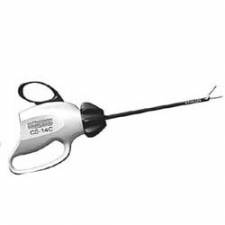Clinical and biomedical engineers are metrologists who use medical equipment to measure things. Understanding specification is key to choosing the correct test tool. Manufacturers recommend test tools, which, of course, should be understood. When a medical equipment manufacturer is brand-specific toward a test instrument in a service manual, engineers should be aware of the underlying ‘or equivalent’ message.
There should be a freedom of choice and to determine the requirements of the equipment under test to decide what the best options are. Evaluate; look at alternatives; demo equipment.

Maintenance of Medical Devices
The aim of medical equipment maintenance is to inhibit medical device failures or inaccuracies; it’s essentially risk management.
The simplest method is to develop preventive maintenance (PM) schedules strictly based on the Original Equipment Manufacturer (OEM) recommendations, because they state testing steps and recommended testing tools in their service manuals.
This can affect decision making during procurement of test tools. It’s important to realise that references to specific devices are irrelevant if the same technological measurement characteristics exist.
The same applies to alterations of PM procedures. A department can implement their own alternative maintenance schedule, if there is documented evidence that patient care is not adversely affected.
Carefully selected biomedical test tools can lead to improved efficiencies, whilst producing reliable data, mitigating risk, and ensuring medical device quality assurance.
Performance and Safety Standards
 Safety and performance essential. Medical electrical equipment must be manufactured to the series of IEC 60601 standards. ISO 13485 for quality management systems and ISO 14971 for risk management are also vital standards to adhere to.
Safety and performance essential. Medical electrical equipment must be manufactured to the series of IEC 60601 standards. ISO 13485 for quality management systems and ISO 14971 for risk management are also vital standards to adhere to.
Take one section of IEC 60601-2-4 as an example. It states that the delivered energy from a defibrillator into a range of impedances must not vary by more than +/-3J or +/-15 %, whichever is greater, at any energy level. The manufacturer must design a defibrillator with this in mind.
The standards do not define specialist test equipment for this measurement, nor do they for any other parameter.
A manufacturer might specify a device they used for their own testing, but the ‘equivalent’ message is frequently mentioned. For the end user, it does not necessarily have to be the test tool recommended. It’s ultimately a freedom of choice if the risks are understood.
Real Life Examples
- Defibrillator Testing
It is the responsibility of healthcare technology management to decide test equipment equivilancy.
| Equipment | Specifications |
|---|---|
| Defibrillator analyzer with external noninvasive pacer measurements | Energy range 0 to 360J Load resistance 50 ± 1% Accuracy ± 1%. Non inductive |
| Patient simulator | Rates: 20bpm - 120bpm. Accuracy ± 1% Amplitude ± 2% |
| Safety analyser |
Leakage current range 0-9999 µA
|
- Electrical Safety Testing
Safety testing is required in accordance with IEC 62353
- Electrosurgery Unit Testing
Test equipment required:
- True RMS voltage multimeter
- Current transformer
- Noninductive resistors 1% accuracy 100, 200, 500Ω
The terminology may differ, but the equivalent message remains the same!
Equipment Maintenance
Maintenance created solely on OEM procedures may not be the most efficient system for a department, as it is a schedule-based process.
An alternative method is a risk-based or evidence-based maintenance schedule. Despite the initial resource there is evidence of increasing departmental efficiencies and streamlining of testing using this method.
A hospital must continuously assess the risk of this schedule and provide data that it has assessed the maintenance track record to optimise intervals.
The use of appropriate test equipment ensures test data is stored properly in an asset management software package. Accurate, repeatable, and traceable measurements ensure data is consistent and true.
 Measurement and Metrology
Measurement and Metrology
In any test and measurement setup, the measurement value of a device under test (DUT) is compared with those of a calibration standard of known accuracy.
A standard could be a measurement or source device. An electrosurgical analyser measures, a patient simulator is a source.
In practice, a test accuracy ratio (TAR) of 4:1, or even 1:1, is acceptable if the risk is understood.
Specsmanship
Specifications or measurement results of one tester might be over-specified to establish an irrelevant advantage over another, a practise sometimes referred to as specsmanship. An acceptable test accuracy ratio is the factor to consider when purchasing a test tool, so it’s important to not become absorbed in comparing like-for-like test equipment specifications in tenders or purchase descriptions.
Conclusion
The demand for biomedical test equipment is clear, but how does a department decide on their purchase if a manufacturer has recommended a particular device?
Any alternative device with similar technological characteristics can be implemented. Devices can even be substituted for standard test and measurement equipment and it’s important to understand that over-specifying any parameters is unnecessary. The tools need to correlate with the specifications of the medical device.
With the use of the right test tools, a hospital will be able to provide better evidence with accurate data when evaluating and testing their alternative equipment maintenance system. This reduces risk and improves efficiencies.
The choice of test tool is ultimately down to user preference and what is fit for purpose of the required solution. The department can decide on factors as they would with any other product, such as budget, portability, simplicity, or the level of after-sales support.










